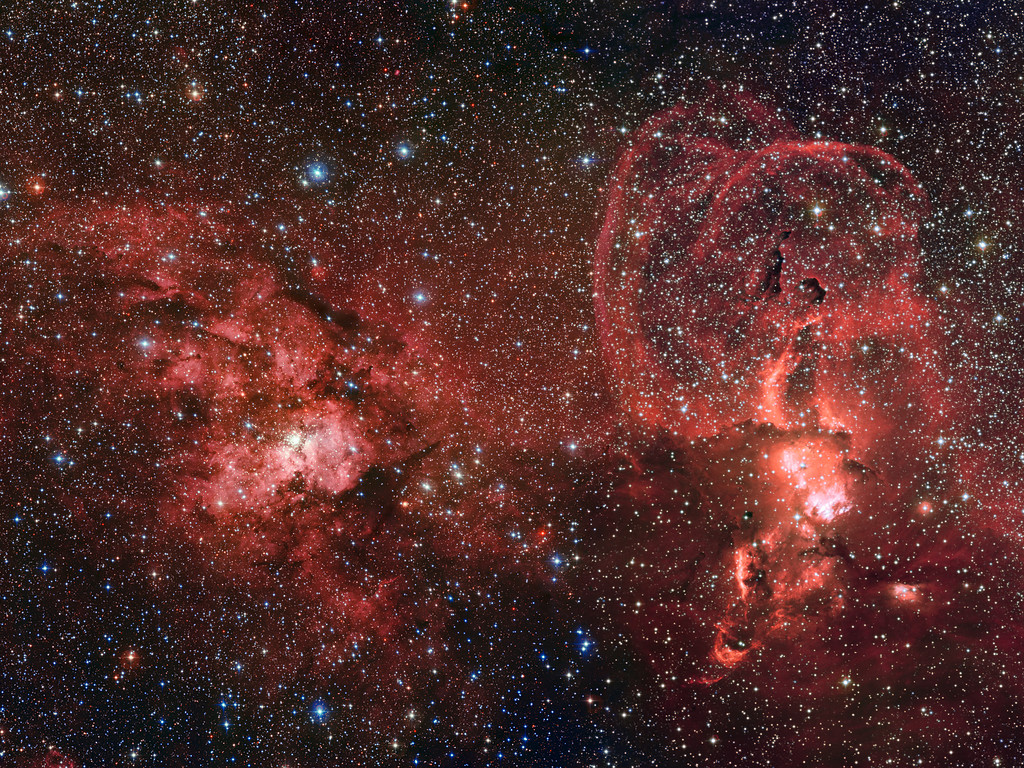A stunning image from the European Southern Observatory (ESO) released this week showing a wide-field view of star formation across the Carina-Sagittarius spiral arm.
The image is from the ESO's La Silla Observatory in Chile, which offers unparalleled views of the southern hemisphere's skies thanks to its high elevation in the Andes mountains and low levels of cloud coverage.
The image shows two prominent star-forming regions: NGC 3603 (left) and NGC 3576 (right), both in the Carina-Sagittarius spiral arm of our galaxy. This spiral arm is the nearest major spiral arm to us as we look towards the centre of our galaxy. The spiral arm spans about a third of the night sky as we see it wrapped around the Galactic Centre, and contains many of the famous star forming regions and nebulae in the night sky.
Interestingly, this area of the spiral arm is the part where the arm curves away from us, causing long stretches of the arm to be superimposed along our sight-line. This means that NGC 3603 is about twice as far away from us as NGC 3576, despite the two regions appearing close to each other on the night sky and appearing as one extended region.
The image is from the ESO's La Silla Observatory in Chile, which offers unparalleled views of the southern hemisphere's skies thanks to its high elevation in the Andes mountains and low levels of cloud coverage.
 |
| Star formation across Carina and Sagittarius (Credit: ESO) |
The image shows two prominent star-forming regions: NGC 3603 (left) and NGC 3576 (right), both in the Carina-Sagittarius spiral arm of our galaxy. This spiral arm is the nearest major spiral arm to us as we look towards the centre of our galaxy. The spiral arm spans about a third of the night sky as we see it wrapped around the Galactic Centre, and contains many of the famous star forming regions and nebulae in the night sky.
Interestingly, this area of the spiral arm is the part where the arm curves away from us, causing long stretches of the arm to be superimposed along our sight-line. This means that NGC 3603 is about twice as far away from us as NGC 3576, despite the two regions appearing close to each other on the night sky and appearing as one extended region.
No comments:
Post a Comment